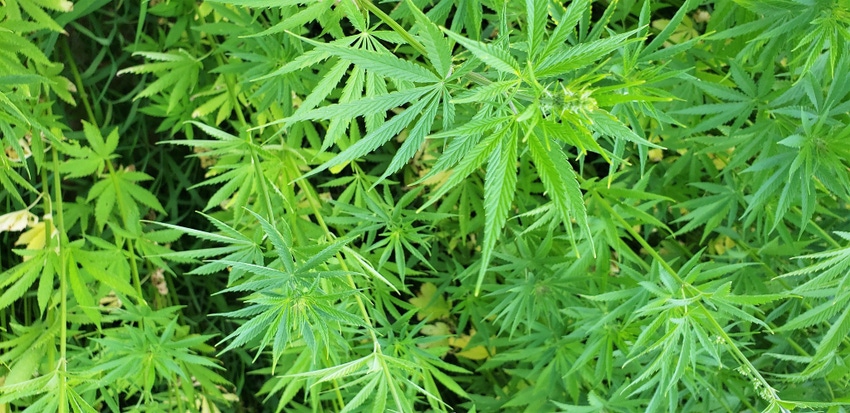Study examines feeding lambs spent hemp biomass
Oregon researchers assess effects of feeding spent hemp biomass to lambs on cannabinoid residuals in meat and on animal health and performance.
October 9, 2020

Researchers at Oregon State University are in the midst of a feeding trial to assess how feeding spent hemp biomass to lambs affects cannabinoid residuals in meat as well as animal health and performance.
According to the research team, led by Dr. Massimo Bionaz, the long-term goal is to implement the safe use of hemp byproducts in livestock diets and take full advantage of their nutritional and potential medicinal properties to improve animal health and the quality of animal products.
The objective of the present study is to assess the presence of tetrahydrocannabinol (THC) and cannabidiol (CBD) residuals in meat of ruminant animals fed diets that contain spent hemp biomass, according to information posted on the website of the Bionaz laboratory. These data are essential for obtaining Food & Drug Administration approval for use of hemp byproducts in ruminant diets, the researchers said.
Because data to obtain FDA approval for hemp use are not available in the U.S., the researchers said there is a critical need to assess the presence of cannabinoid residuals in milk and meat from ruminants fed hemp byproducts and the effect on the quality of the animal products as well as animal health and performance.
The specific study objective is to determine the effect on health and meat quality of THC and CBD residuals in finishing lambs fed spent hemp biomass in place of alfalfa as the roughage source. The researchers are investigating the feeding level and withdrawal period of spent hemp biomass in place of alfalfa in feedlot finishing lamb diets. Specifically, they are assessing THC and CBD residuals in meat cuts, along with evaluating growth performance, carcass traits and meat quality.
Bionaz told the Corvallis (Ore.) Advocate that "the majority of hemp is cultivated for CBD extraction, with a tremendous amount of post-extraction biomass that has not, at the moment, any market, and it is a nuisance for the hemp industry. The fact that the CBD is extracted in plants that are only in bloom vegetative stage and that the CBD is extracted only from flowers and leaves makes this product highly nutritive.”
He added that after the lamb trial is completed, additional studies will be done with broiler chickens and then dairy cattle to test the effect of spent hemp biomass on milk.
“We are starting a similar trial with dairy cows where a group will receive up to 15% spent hemp biomass instead of alfalfa to assess the residuals in milk, fat tissue and muscle tissue and the effect on health and performance. We will also assess if a withdrawal period would aid in reducing or eliminating any putative residuals in milk, fat tissue and muscle,” Bionaz told the local newspaper.
Project members include principle investigators Serkan Ates and Bionaz and graduate students Nathan Parker and Hunter Ford, with project funding from the Oregon Beef Council.
Kansas State University also has announced plans to study the safety of industrial hemp products in cattle feed.
You May Also Like

.png?width=300&auto=webp&quality=80&disable=upscale)

